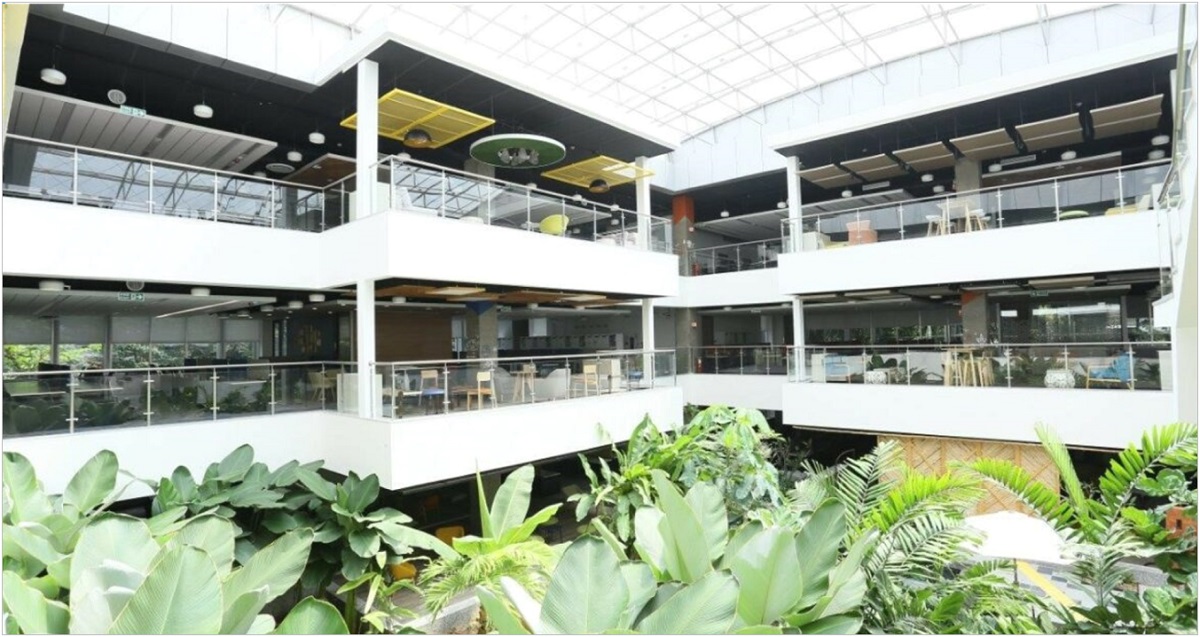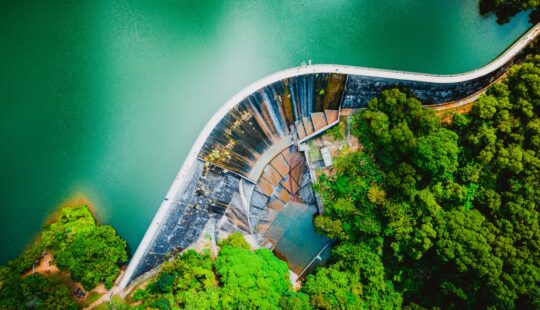Companies that invest in green buildings not only save money, improve efficiency, and lower carbon emissions, they also create healthier places for people.
According to a study by the American Journal of Public Health investigating the effects of green buildings on employee health and productivity, employees who moved from conventional offices to buildings rated for Leadership Energy Environmental Design (LEED) reported a reduction in absenteeism, depression, and stress levels as well as an increase in their sense of happiness.
Developed by the U.S. Green Building Council (USGBC) in the late 1990s, LEED certification is a globally recognized symbol of sustainability, providing third-party verification that a building was built to address energy savings, water efficiency, CO2 emissions reduction, and indoor environmental quality. LEED is a holistic rating system that looks at the big picture, factoring in all critical elements that work together to create the best building possible for the people who work there and their visitors.
Hybrid Air Conditioning, Rooftop Greenery
SAP understood this concept from the early days of its global expansion. As the company grew and acquired facilities, it committed to creating workspaces that combined efficiency with employee well-being. Designed with sustainability in mind, SAP Americas headquarters in Newtown Square, Pennsylvania, for example, was awarded LEED Platinum level in 2011, receiving high points for energy efficiency, water management, and innovative design.
The building is one-third more energy efficient compared to conventional buildings by using intelligent design features. The building’s sensor system is integrated with exterior shading devices that automatically adjust the lighting and help control the temperature level in the facility. A hybrid air conditioning system produces ice to cool the building during the overnight hours when energy demands and electric rates are the lowest.
The building saves 2 million gallons of water and 2 million kilowatt hours of power per year and reduces SAP carbon footprint by 85,000 tons. Floor-to-ceiling glass exteriors and a green roof, planted with native and regional vegetation, integrate the office with the natural environment surrounding it.
Lush Forests, Natural Beauty
Another SAP building that received LEED certification early on is the SAP Labs Latin America location. The Gold certified location is surrounded by lush, subtropical forests in the south of Brazil, embodying the idea of an exceptional workplace. Every single workstation in the building has an external view, giving employees a sense of communing with nature, a feeling intensified by the natural light and the swathes of local vegetation and running water in the internal courtyards. Built solely from sustainable materials, including wood, metal and glass, the building uses recycled water and its temperature is regulated by the building automation system.
“We even made sure to position the staircase centrally and keep the elevators off to the side, so people automatically take the stairs,” quips Dennison John, managing directors of the location. Built in three stages, between 2006 to the present, SAP Labs Latin America is not only one of the greenest buildings operated by SAP worldwide, it is one of the greenest on the entire continent.
“At SAP, we are enablers and exemplars of sustainability,” says John. “Besides providing employees with a healthy environment, our goal is to show customers how we as a company are reducing our carbon footprint. With over 200 customer visits per year, we have ample opportunity to demonstrate the environmental advantages of a green building and showcase the natural beauty around us.”
Nap Zones, Neighborhoods
Another LEED Gold certified building is the SAP Labs India location in Bangalore. With the onset of the COVID-19 pandemic, it became increasingly important to provide a workspace suitable for flexible working, prompting a complete overhaul fully focused on sustainability.
During the two-year transformation period, traditional workspaces with dedicated desks were transformed into activity-based work areas and free seating to maximize team collaboration and social interaction. Dedicated home zones for teams, known as neighborhoods, were created based on SAP’s 4C design principles to enable collaboration, communication, concentration, and community.
One of the objectives of the renovation was to reflect the vast diversity characterizing India. The campus environment highlights the architecture and culture of India in many aspects. The building is designed around three primary courtyards, which connect all elements and people both vertically and horizontally. The workspaces intercept with social spaces and discussion pockets, all with easy access to the courtyards.

The entrance of the building leads to a colossal solarium that connects all floors to a large-scale digital wall used for demos, coffee corner sessions, customer engagements, and employee all-hands meetings. The solarium offers a view of the beautifully manicured landscape surrounding the building. Like their Brazilian colleagues, instead of using the elevators, people prefer to use the iconic staircases to move between floors.
Almost 95% of SAP Labs India campus operations run on green energy sources. seventy percent of the car fleet runs on electric vehicles, and charging stations on campus for employees aim to help them make responsible choices and create a cleaner environment.
According to SAP Chief Sustainability Officer Daniel Schmid, SAP is aiming for a minimum of LEED Silver standard for new buildings worldwide.
“The buildings in Newtown Square, Bangalore, and Brazil are among the pioneers in green building design worldwide. Besides reducing energy costs and emissions, we create a truly welcoming environment for our employees. This is one of the ways that we role model our strategies on our journey to net zero,” he says.
In the meantime, with many LEED certified buildings worldwide, SAP has become a true enabler and exemplar of sustainability for people, planet, and profit.
For more information on how SAP helps companies record, report, and act on their sustainability goals, visit sap.com/sustainability.



